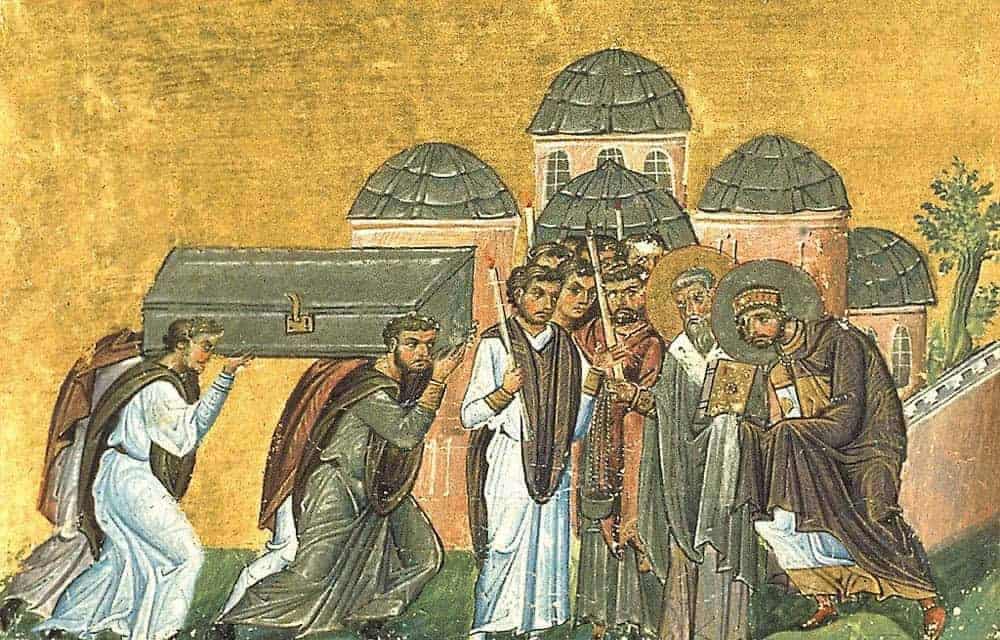The body of Patriarch Nicephorus I was brought back to Constantinople on this day in 847. Nicephorus followed in the footsteps of his father, joining the service of the Empire as a cabinet secretary and eventually withdrew to a cloister, where he remained along the eastern shore of Bosphorus before being promoted. He was appointed the director of one the biggest homes for impoverished people.
The lifestyle Nicephorus chose for himself aligned well with his family’s beliefs: they were strictly orthodox. Their religious convictions were put to the test when the family suffered through one of two periods during the Byzantine Empire overshadow by Iconoclasm. The widespread and long-lasting ban on religious images ignited the destruction of images in concert with persecutions of anyone venerating an icon.

The Western church fully supported religious relics and imagery, which further distinguished contrasting elements that were in the middle of a growing divergence between Eastern and Western traditions. They were still unified as one church at this point. Nicephorus’ father was a secretary for the Emperor when he was persecuted for Iconoclasm. He endured corporal punishment by being repeatedly whipped and was banished to Nicaea.
The Emperor chose Nicephorus to take the role of Patriarch, a move that was met with intense opposition by an ardent clerical group. This led to open debates that quickly devolved into personal disputes. Nicephorus was removed from his post and he retreated to a cloister until he died in 828. His bones were interred in the Church of the Holy Apostles, Constantinople on this day in 847.

